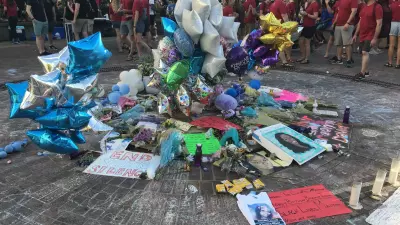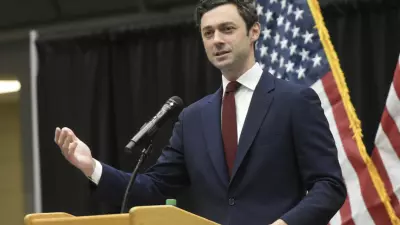Spotlight PA is an independent, non-partisan newsroom powered by The Philadelphia Inquirer in partnership with PennLive/The Patriot-News, TribLIVE/Pittsburgh Tribune-Review, and WITF Public Media. Sign up for our free newsletters.

PITTSBURGH — Hospitals in two regions of Pennsylvania are struggling to maintain the staff needed to care for soaring numbers of COVID-19 patients, as the state reported more than 11,400 new cases Thursday, shattering the previous record.
At least a third of hospitals in southwest and south-central Pennsylvania expect staffing shortages in the next week, state data shows. Still, officials are leaving decisions about how to handle such dilemmas up to health-care systems. They expect providers in different regions to work together and, if necessary, share resources like equipment, supplies, staff and beds.
“They have no incentive either from a staffing point of view or from a facilities point of view to let their systems be overwhelmed,” Gov. Tom Wolf said during a news conference Tuesday. “They’ve seen what’s happened in other states. And in conversations with them, I am convinced that there is nobody with a greater incentive to make this work than the health-care systems themselves.”
But should that collaboration fail, hospitals big and small aren’t likely to receive reinforcements from the state.
As of Thursday, 1,065 people with COVID-19 were hospitalized in intensive care units, accounting for 86% of the state’s total capacity. About a third of the state’s 5,276 ventilators were in use. But even if beds and equipment are still available, hospitals may not have the staff needed to care for sick people.
Health Secretary Rachel Levine issued an order Nov. 23 instructing hospitals to reduce elective procedures if a region meets at least two criteria, including a surge in COVID-19 hospital admissions, a shortage of staff, or a shortage of staffed beds.
Rescheduling elective procedures that aren’t urgent could help free up staff, beds, equipment, and personal protective gear needed to treat COVID-19 patients or others who need immediate care, she said.
But beyond that order, the state hasn’t put any other new rules in place to guide hospitals through the surge. If staffing levels continue to drop, it’s not clear what more the state could do to intervene.
As of Thursday, two of the state’s seven “health coalition regions” — state-designated regional groups of hospitals and health-care systems — were facing a staffing crisis, state data show. If the southwest and south-central regions also see a surge in COVID-19 patient admissions or face an extreme shortage of beds, the state would require hospitals in those areas to reduce elective procedures by half.
Pittsburgh-based Allegheny Health Network is among those in the southwest facing a staffing shortage, with about 400 people currently off from work for coronavirus-related reasons, said Dr. Don Whiting, the system’s chief medical officer.
“I am most concerned that this has been going on now for a number of months, eight months, and people are fatigued,” he said.
The system is also losing nurses to staffing agencies offering higher salaries, said Claire Zangerle, chief nurse executive for Allegheny Health Network.
As a result, Allegheny Health Network has also turned to staffing agencies and traveling nurses that live locally. Staff has been diverted from their typical assignments to fill in where needed.
The system, which serves 29 Pennsylvania counties across eight hospitals, has also started identifying retired doctors and nurses to fill in the gaps. But pulling people out of retirement won’t solve the issue, Zangerle said.
“If you’re retired, you’re probably of the age that you’re highly susceptible to the virus,” Zangerle said. “That’s my biggest fear.”
Small and rural hospitals in the southwest are also facing many of the same challenges as their larger counterparts, said Lisa Davis, director of the Pennsylvania Office of Rural Health, which coordinates state and federal resources for rural health care.
“The uniqueness is that they’re smaller, more geographically isolated with fewer resources than their urban counterparts, or their larger counterparts,” Davis said.
The Butler Health System, in Butler County, announced Wednesday that two hospitals in the system — Butler Memorial and Clarion — are at capacity in their intensive care units and have suspended elective procedures.
Though they are not at capacity, ACMH Hospital in rural Armstrong County is dusting off plans to handle a surge in COVID-19 admissions, which includes preparing areas of the facility to handle an overflow of patients needing intensive care.
The hospital had its highest number of COVID-19 patients, 19, in November. The facility is licensed for 12 intensive care unit beds and has had six, at most, filled at one time.
“Staffing is definitely a challenge,” said Nichole Geraci, ACMH chief operating officer. “It’s no secret: Nurses are difficult to find on a good day, let alone during a pandemic. Pre-COVID, we were having resignations, primarily retirements and such, that were impacting our ICU.”
Like their larger counterparts, ACMH has had staff sidelined due to COVID-19 exposure, Geraci said.
Should the worst happen, and cases continue to surge past staffing capacity, the state has very limited resources to offer.
Multiple Pennsylvania National Guard teams are currently deployed in long-term care facilities and are not available to assist hospitals, Levine said during a press conference Thursday.
“They can’t be in two places at once,” she said. “So right now, that’s their mission.”
In a statement, agency spokesperson Nate Wardle said the state has issued waivers to allow more health care workers to work in hospitals, including nurses licensed to work in other states and graduates of nursing school programs who have not yet taken their licensure exam. The state is looking for other solutions, including additional federal funding, but the situation is challenging, he said.
As COVID-19 cases began to sharply rise in September and October, state health officials said the state was better prepared for the fall surge and widespread lockdowns weren’t needed at the moment. In June, the state hired a new emergency preparedness vendor, the Philadelphia-based Public Health Management Corporation (PHMC), to coordinate with hospitals and other health-care providers.
“PHMC is well positioned to help move the commonwealth forward in its preparation efforts for future emergencies, including preparations in the case that coronavirus resurges in the fall or winter,” Levine said in a statement at the time. “We are looking forward to the opportunity to expand our existing hospital preparedness program, as well as creating an inclusive environment for all members of our health care system through our health care coalitions.”
When asked how it has helped to support hospitals and health-care systems during the recent surge, PHMC deferred comment to the state Department of Health. In a statement, Wardle said that PHMC has assisted facilities with planning for the surge, but did not provide specific details.
Allegheny County, the epicenter of the southwestern health coalition region, is prepared to open an alternate site to care for COVID-19 patients if needed. But those emergency plans are not being activated right now, the director of the county’s health department said during a press conference Wednesday.
For now, the county is relying on mitigation efforts that are already in place, including a countywide stay-at-home advisory that was issued Nov. 18. If hospital leaders tell the county they’re in crisis, further mitigation efforts could be taken, department Director Dr. Debra Bogen said.
“That’s the trigger,” Bogen said. “But it’s not completely out of our control outside the health-care system.”
Bogen urged the public to stay home, limit gatherings and wear a mask. Levine echoed those calls Thursday.
“We have to remember that there are not an unlimited number of hospital beds,” Levine said. “But more importantly, there are not an unlimited number of staff — doctors, nurses, support staff, EMTs, health-care workers in the most general sense. The people who make our health-care system work are relying on you.”
The state has not enacted any new mitigation orders since Nov. 23. In addition to the order setting guidelines for reducing elective procedures, the state also set new restrictions on gatherings, mandated telework for all businesses that could accommodate it, and required public schools to agree to certain safety protocols if they are located in areas with substantial community spread.
Levine would not say whether any new stay-at-home or business closure orders are on the horizon.
“It’s hard for me to predict the future in terms of what mitigation measures might be necessary, ” Levine said. “But right now we’re going to be observing the impact of the mitigation measures that we put in place.”
100% ESSENTIAL: Spotlight PA relies on funding from foundations and readers like you who are committed to accountability journalism that gets results. Become a member today at spotlightpa.org/donate.







